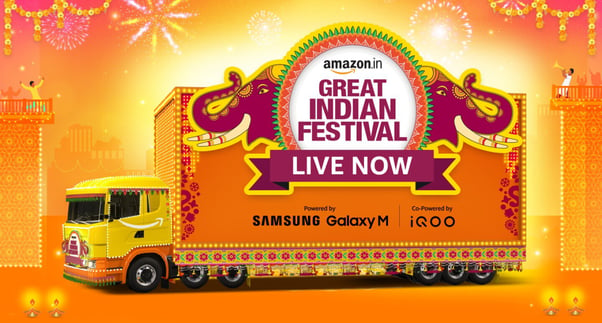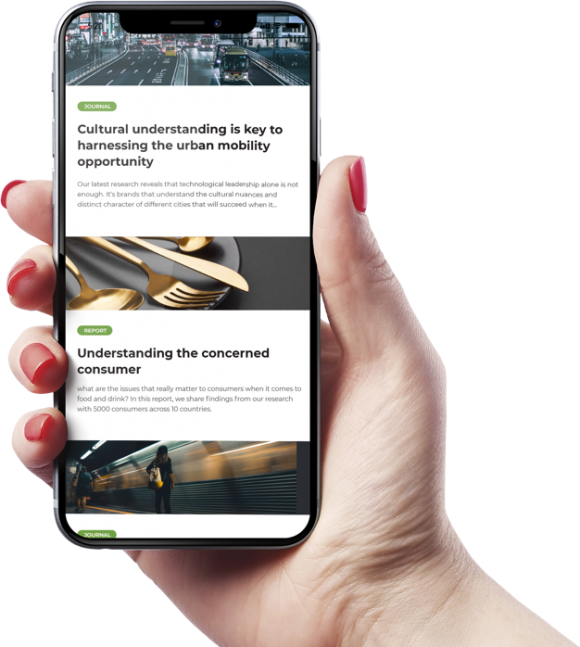India has crossed 800 million internet users, establishing itself as one of the largest online markets globally. This rapid digital growth can be primarily attributed to the Digital India initiative launched in 2015 by the Government of India. The initiative aims to propel India into a digitally empowered society and knowledge economy by enhancing online infrastructure and expanding internet connectivity.
Understanding this new digital India is crucial for brands looking to tap into this vast market. With a significant portion of the population now online, companies must adapt their strategies to engage tech-savvy consumers effectively. This demographic is not just confined to the urban elite; it spans various age groups, income levels, and regions, including rural areas where internet penetration is steadily increasing.
The Digital Transformation of India
Growth of Internet and Smartphone Penetration in India
The growth of internet and smartphone penetration in India has been phenomenal. This rapid expansion can be attributed to the widespread availability of affordable smartphones and data plans. According to the Telecom Regulatory Authority of India (TRAI), broadband subscribers reached approximately 825 million by the end of 2023, a testament to the growing demand for digital connectivity.
Smartphone penetration has also seen a remarkable rise. Counterpoint Research reports that smartphone shipments in India crossed 150 million units in 2022, driven by increasing affordability and a diverse range of options catering to various consumer segments. This growth is not limited to urban centres; rural areas have also witnessed substantial increases in smartphone adoption, contributing to a more connected and digitally aware population.
Impact of Government Initiatives like Digital India and BharatNet
The Digital India initiative aims to ensure that government services are made available to citizens electronically by improving online infrastructure and increasing internet connectivity. One of the significant components of this initiative is BharatNet, a project aimed at connecting all of India’s gram panchayats (village councils) through high-speed fiber-optic networks.
As of 2023, BharatNet had successfully laid over 500,000 kilometres of optical fibre, connecting over 250,000-gram panchayats. This initiative has significantly improved internet accessibility in rural areas, allowing millions of rural residents to access digital services, from healthcare and education to banking and e-governance. The success of these initiatives underscores the government’s commitment to bridging the digital divide and ensuring inclusive growth.
Role of Technology in Everyday Life: From Urban to Rural Areas
Technology has become an integral part of daily life for Indians across the socio-economic spectrum. In urban areas, tech-savvy consumers rely on digital platforms for shopping, entertainment, communication, and more. E-commerce giants like Amazon and Flipkart have seen tremendous growth, with India’s e-commerce market projected to reach $188 billion by 2025, according to a report by IBEF. Streaming services like Netflix, Amazon Prime Video, and Disney+ Hotstar are also seeing increased subscriptions, catering to the diverse entertainment needs of the urban population.
In rural areas, the impact of technology is equally profound. Mobile phones and internet access have empowered farmers with information on weather forecasts, crop prices, and best agricultural practices. Digital payment systems like UPI (Unified Payments Interface) have revolutionised transactions, making it easier for rural residents to participate in the digital economy. Educational apps and online learning platforms have made quality education accessible to students in remote areas, bridging the gap between urban and rural education standards.
The pervasive role of technology in India’s daily life highlights the importance of digital inclusion and the potential for brands to engage a diverse and tech-savvy consumer base. Understanding these dynamics is essential for crafting effective engagement strategies tailored to the unique needs and preferences of Indian consumers.
Understanding the Tech-Savvy Indian Consumer
Demographic Analysis: Age, Location, Income Levels
- Age: The tech-savvy Indian consumer spans various age groups. The largest segment is the 18-35 age group, which makes up about 60% of the internet user base. This segment is highly active online, engaging in social media, e-commerce, and digital entertainment.
- Location: While urban areas like Delhi, Mumbai, and Bangalore are hubs of digital activity, rural areas are increasingly catching up. As of 2023, rural India accounted for approximately 45% of the country’s internet users, driven by government initiatives and affordable smartphones.
- Income Levels: The middle class forms the bulk of the digital consumer base, with increasing disposable income and a propensity to spend on technology and digital services. However, the digital economy also includes lower-income segments, particularly rural ones, who use mobile internet for essential services like banking and education.
Behavioural Patterns: Online Shopping, Social Media Usage, Content Consumption
- Online Shopping:
- E-commerce has seen exponential growth. According to IBEF, India’s e-commerce market is projected to reach $188 billion by 2025.
- Consumers prefer platforms like Amazon and Flipkart and niche players like Nykaa (beauty products) and BigBasket (groceries).
- A significant trend is the rise of mobile commerce, with over 70% of e-commerce traffic coming from mobile devices.
- Social Media Usage:
- India is one of the largest markets for social media platforms, with over 500 million active users.
- Popular platforms include Facebook, WhatsApp, Instagram, and X. Emerging platforms like ShareChat and Moj cater specifically to regional language users.
- With a high user engagement rate, social media is a crucial avenue for news consumption, brand interaction, and socialising.
- Content Consumption:
- Video streaming is hugely popular, with platforms like YouTube, Netflix, Amazon Prime Video, and Disney+ Hotstar leading the market.
- Short-form video content attracts a large mobile-first audience.
- Online gaming is another significant trend, with a growing number of mobile gamers and the increasing popularity of games like PUBG Mobile, Free Fire, and Call of Duty Mobile.
Preferences and Expectations from Digital Services and Products
- Personalisation: Consumers expect personalised experiences based on their preferences and behaviour. This includes tailored recommendations on e-commerce sites, customised content on streaming platforms, and targeted advertisements.
- Convenience: There is a high demand for seamless and convenient services. This includes easy navigation, quick load times, and hassle-free payment options. The popularity of digital payment platforms like UPI reflects this trend.
- Affordability: Cost is a crucial factor. Consumers prefer services and products that offer value for money. Affordable data plans and budget smartphones have significantly driven internet penetration.
- Localisation: Content and services tailored to local languages and cultural contexts are highly valued. Platforms offering regional language options see higher engagement as they cater to India’s diverse linguistic landscape.
- Trust and Security: Consumers are concerned about data privacy and security with increasing digital transactions. They expect robust security measures and transparency from service providers.
- Innovation: The tech-savvy Indian consumer is open to new and innovative solutions, whether in the form of new apps, tech gadgets, or digital services. Early adopters of technology are keen to try the latest trends and products.
Key Findings on Consumer Behavior and Preferences
- Preference for Mobile Commerce:
Over 70% of e-commerce traffic in India comes from mobile devices, highlighting the importance of a mobile-first strategy.
Consumers prefer shopping apps that offer a seamless and fast user experience.
- Growth in Digital Payments:
Digital payment methods, particularly UPI, have seen widespread adoption. In 2023, NPCI reported over 4 billion UPI transactions per month.
Consumers expect secure and hassle-free payment options across online platforms.
- Demand for Localised Content:
A report by KPMG indicated that 90% of internet users prefer content in their local language.
There is a high demand for content in regional languages. Platforms offering multi-language support see higher engagement. Video content, especially short-form videos, is popular across demographics.
- Importance of Personalisation:
According to a survey by Accenture, 75% of consumers are more likely to buy from a retailer that recognises them by name, recommends options based on past purchases, or knows their purchase history.
Personalised recommendations and targeted marketing campaigns resonate well with consumers. Consumers are more likely to engage with brands that offer tailored experiences based on their preferences and past behaviour.
- Emphasis on Value for Money:
A PwC report highlights that 59% of Indian consumers are driven by promotions and discounts.
Price sensitivity remains a critical factor. Consumers seek products and services that offer the best value for their money. Discount offers, loyalty programs, and value-added services effectively attract and retain customers.
Examples of Successful Digital Marketing Campaigns in India
Amazon India – The Great Indian Festival

Image credit: Amazon India
Amazon’s annual Great Indian Festival is one of India’s most anticipated shopping events. The 2022 edition saw record-breaking sales, with over $4.5 billion in revenue.
The success of this campaign can be attributed to the extensive use of personalised marketing, regional language support, and attractive discount offers.
Amazon utilised data analytics to predict consumer demand, optimise inventory, and offer personalised product recommendations.
Swiggy – #WhatsInAName Campaign:

Image Credit: Ads of the world
Swiggy, a leading food delivery platform, launched the #WhatsInAName campaign to engage users on social media. The campaign encouraged users to share the funniest names they have been called by their friends.
This user-generated content campaign went viral, leading to a 30% increase in social media engagement and a significant boost in app downloads.
Swiggy effectively leveraged humour and relatability to connect with its audience, driving brand recall and customer engagement.
Cadbury – Not Just A Cadbury Ad:

Image Credit: YouTube
During Diwali 2020, Cadbury launched a unique campaign supporting local businesses affected by the pandemic. The campaign featured personalised ads highlighting small businesses in the viewer’s vicinity.
Cadbury created over 1,800 versions of the ad using AI and geo-targeting, making it a hyper-localised campaign.
This innovative approach resulted in a 32% increase in Cadbury’s sales and significant goodwill among consumers, showcasing the brand’s commitment to community support.
Myntra – End of Reason Sale:

Image Credit: India Desire
Myntra’s End of Reason Sale is another successful digital marketing campaign that drives massive traffic and sales. The 2022 edition saw over 5 million orders in four days.
Myntra used influencer marketing, personalised app notifications, and gamified shopping experiences to engage users.
The campaign’s success highlights the effectiveness of combining data-driven personalisation with engaging content and strategic influencer partnerships.
Strategies to Engage Tech-Savvy Consumers
Personalised Marketing: Leveraging Data to Create Targeted Campaigns
Strategy: Personalised marketing uses data analytics to understand consumer preferences and behaviours, creating tailored marketing messages and offers.
Example: Flipkart
Flipkart, one of India’s leading e-commerce platforms, extensively uses data analytics to personalise its users’ shopping experiences.
By analyzing browsing history, purchase patterns, and search behaviour, Flipkart provides personalised product recommendations, customised discounts, and targeted advertisements.
During their Big Billion Days sale, Flipkart employs AI to personalise deals and product suggestions, increasing customer satisfaction and higher conversion rates.
Content Marketing: Producing Relevant and Engaging Content
Strategy: Content marketing involves creating and distributing valuable, relevant, consistent content to attract and engage a clearly defined audience.
Example: Zomato
Zomato, a popular food delivery and restaurant discovery platform, excels in content marketing with its witty and engaging social media content.
Zomato connects with its audience through humour, relatable posts, and trending topics. Their content often goes viral, increasing brand visibility and engagement.
The brand’s blog and social media channels feature food-related content, including recipes, food trends, and restaurant reviews, keeping its audience engaged and coming back for more.
Social Media Strategies: Platforms to Focus on and Effective Content Types
Strategy: Effective social media strategies involve using the right platforms to reach the target audience and creating content that resonates with them.
Example: Swiggy
Swiggy, a leading food delivery app, has a robust social media presence across platforms like Instagram, Twitter, and Facebook.
Swiggy engages with its audience using user-generated content, interactive polls, contests, and humour.
During the lockdown, Swiggy launched the “#SwiggyFromHome” campaign, encouraging users to share their home-cooked meals and win vouchers. This campaign increased engagement and brand loyalty.
Mobile-First Approach: Optimising User Experience for Mobile Devices
Strategy: A mobile-first approach focuses on designing and optimising websites and apps for mobile devices to ensure a seamless user experience.
Example: Paytm
Paytm, a leading digital wallet and financial services platform in India, has a mobile-first strategy that has been instrumental in its success.
The Paytm app is designed to be user-friendly, with quick load times, easy navigation, and secure payment options.
It continuously updates its mobile app with new features, such as Paytm Postpaid and Paytm First, enhancing the user experience and retaining customers.
E-Commerce Trends: Integrating Seamless Shopping Experiences
Strategy: Integrating seamless shopping experiences involves providing a smooth, convenient, and enjoyable shopping journey across all touchpoints.
Example: Nykaa
Nykaa, an online beauty and wellness retailer, has mastered the art of seamless shopping experiences.
Nykaa’s app and website are designed to be intuitive and easy to navigate. They offer features like virtual try-ons, personalised recommendations, and a robust customer review system.
During sales events like the “Pink Friday Sale,” Nykaa ensures a smooth checkout process, fast delivery, and excellent customer service, leading to high customer satisfaction and repeat purchases.
Challenges in Reaching Diverse Demographics
- Diverse Linguistic Landscape:
Challenge: India has 22 officially recognised languages and hundreds of dialects, making it difficult for brands to communicate effectively with all potential consumers.
Opportunity: Offering multi-language support on digital platforms can significantly enhance user engagement. Brands like Google and Facebook have already implemented regional language options to cater to a broader audience.
- Socio-Economic Diversity:
Challenge: The wide range of income levels affects purchasing power and access to digital technologies. Strategies effective for urban, high-income groups may not work in rural, lower-income segments.
Opportunity: Affordable pricing models and tailored marketing strategies can bridge this gap. For instance, Xiaomi’s success in India is largely due to its budget-friendly smartphones, which cater to lower—and middle-income groups.
- Varied Digital Literacy Levels:
Challenge: There is significant variation in digital literacy across different regions and age groups, which affects how people interact with technology and digital services.
Opportunity: Investing in digital literacy programs and creating user-friendly interfaces can help. For example, Reliance Jio’s efforts to provide affordable internet and educational content have increased digital literacy in rural areas.
Privacy and Data Security Concerns
- Data Privacy Regulations:
Challenge: Complying with stringent data privacy laws, such as the Personal Data Protection Bill in India, requires significant changes to data handling practices.
Opportunity: Ensuring compliance and transparency can build consumer trust. Brands prioritising data privacy, like Apple, have gained a competitive advantage by being perceived as trustworthy.
- Cybersecurity Threats:
Challenge: The rise in cyber-attacks and data breaches poses significant risks to companies and consumers.
Opportunity: Investing in robust cybersecurity measures and educating consumers about safe online practices can mitigate these risks. For instance, Paytm has implemented advanced security protocols to protect user data and transactions.
- Consumer Skepticism:
Challenge: Increasing awareness of data misuse has led to growing consumer scepticism and reluctance to share personal information online.
Opportunity: Transparent data usage policies and clear opt-in/opt-out options can alleviate consumer concerns. Brands like WhatsApp have tried communicating their data privacy policies more clearly to users.
Opportunities in Emerging Technologies: AI, AR/VR, IoT
- Artificial Intelligence (AI):
Opportunity: AI can enhance personalisation, improve customer service, and optimise business operations.
Example: HDFC Bank uses AI-powered chatbots to provide 24/7 customer support, improving user experience and operational efficiency. Netflix also uses AI algorithms to recommend content based on user preferences, leading to higher engagement and retention rates.
- Augmented Reality/Virtual Reality (AR/VR):
Opportunity: AR/VR technologies can offer immersive experiences that enhance product visualisation and customer engagement.
Example: Lenskart uses AR to allow customers to try on glasses virtually, improving the online shopping experience. IKEA’s AR app, IKEA Place, enables users to visualise furniture in their homes, leading to more informed purchase decisions and higher customer satisfaction.
- Internet of Things (IoT):
Opportunity: IoT can revolutionise smart homes, healthcare, and agriculture by providing real-time data and automation.
Example: Smart home devices like Amazon Echo and Google Home are becoming increasingly popular in urban households. Tata Communications’ IoT solutions for agriculture help farmers monitor crop conditions and optimise irrigation, enhancing productivity and sustainability.
Future Trends
Predictions for the Future of Digital Engagement in India
- Increased Internet Penetration:
Prediction: With ongoing government initiatives like Digital India and BharatNet, internet penetration is expected to reach over 900 million users by 2025.
Impact: Greater internet access will lead to increased digital engagement across urban and rural areas, offering brands a larger audience to target.
- Growth in Mobile Commerce:
Prediction: Mobile commerce will dominate the e-commerce space, with smartphones becoming the primary mode of online shopping.
Impact: Brands must optimise their mobile platforms to ensure seamless user experiences and leverage mobile payment solutions to cater to this growing trend.
- Rise of Regional Content:
Prediction: As more non-English-speaking users come online, demand for content in regional languages will surge.
Impact: Content creators and platforms will increasingly produce and support regional language content to engage a wider audience.
- Enhanced Personalisation:
Prediction: Advanced data analytics and AI will enable even more personalised user experiences, from product recommendations to targeted advertising.
Impact: Companies leveraging AI effectively for personalisation will see higher engagement and conversion rates.
Potential Growth Areas: Fintech, Edtech, Healthtech
| Sector | Growth Drivers | Examples | Future Outlook |
| Fintech | Increased adoption of digital payments, financial inclusion initiatives, and innovative banking solutions. | Paytm and PhonePe lead in digital payments, while neobanks like Niyo gain traction with digital-first banking solutions. | Projected to reach $150 billion by 2025. Innovations in blockchain, digital lending, and insurtech will drive further growth. |
| Edtech | The shift to online learning, increasing internet access, and the need for skill-based education. | BYJU’S has become a global leader in online education, while platforms like Unacademy and Vedantu are rapidly expanding their offerings. | Projected to reach $10.4 billion by 2025. Personalised learning, AI-driven tutoring, and immersive learning technologies like AR/VR will shape the future of education. |
| Healthtech | Growing awareness of digital health solutions, increased investment in healthcare technology, and a focus on preventive care. | Practo offers telemedicine services and digital health records, while startups like Cure.fit combine fitness, nutrition, and mental well-being services. | Projected to grow to $50 billion by 2025. Innovations in telemedicine, wearable health devices, and AI-driven diagnostics will be crucial in this growth. |
How Companies Can Stay Ahead of the Curve
Embrace Innovation:
Strategy: Continuously invest in R&D to innovate and stay ahead of market trends. Brands must explore emerging technologies like AI, AR/VR, and IoT to enhance their offerings.
Example: Tata Consultancy Services (TCS) invests heavily in innovation hubs and collaborates with startups to drive technological advancements.
Focus on Customer Experience:
Strategy: Prioritise user experience by offering personalised, seamless, and intuitive digital interactions. Regularly gather feedback and use data analytics to refine and improve services.
Example: Amazon India’s focus on customer-centric innovations, such as same-day delivery and personalised recommendations, has helped maintain its market leadership.
Localise Offerings:
Strategy: Adapt products and services to local languages, cultures, and preferences to cater to diverse consumer segments. Localisation should go beyond language to include cultural nuances and regional needs.
Example: Netflix offers a vast library of regional content in multiple languages, catering to India’s diverse audience and increasing its subscriber base.
Build Strategic Partnerships:
Strategy: Collaborate with local businesses, technology partners, and startups to leverage new technologies and expand market reach. Partnerships can provide access to new markets and innovative solutions.
Example: Flipkart’s partnerships with local sellers and global technology firms have enhanced its product range and technological capabilities.
Prioritise Data Security:
Strategy: To build consumer trust, invest in robust cybersecurity measures, and ensure compliance with data protection regulations. Transparency in data usage and transparent privacy policies are essential.
Example: Paytm’s focus on advanced security protocols and compliance with regulatory standards has helped it maintain user trust in a competitive fintech market.
Final Thoughts on the Future of Digital Engagement in India
Driven by increasing internet penetration, widespread smartphone adoption, and a massively growing tech-savvy population, India’s digital landscape is poised for unprecedented growth. As more people come online, the opportunities for brands to engage with consumers in innovative and meaningful ways are immense. As India continues its digital transformation, brands must remain agile and responsive to evolving market conditions. Understanding and adapting to local nuances while leveraging global best practices will be crucial for success. The future of digital engagement in India promises to be exciting and full of opportunities for those ready to take on the challenge.
We are an international market research agency with deep expertise and local knowledge of both Western and Asian markets. With a dedicated office in India, we are uniquely positioned to help brands navigate the complexities of this dynamic market. Whether you need insights into consumer behaviour, competitive analysis, or strategic guidance, our comprehensive market research services are designed to connect the dots and empower you to make better decisions. Contact us to learn how we can help your company reach your audience and grow.




